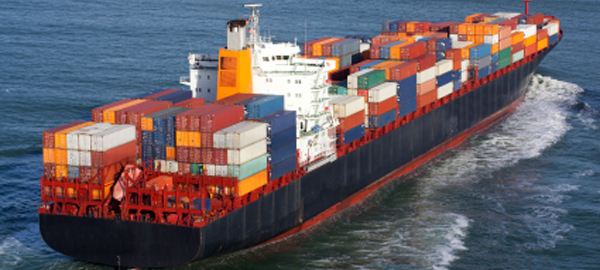Ardent Partners’ annual CPO Rising research report is now available. We called this year’s report, CPO Rising 2014: Convergence and it presents a comprehensive, industry-wide view into what is happening in the world of procurement and captures the experience, performance, perspective, and intentions of 273 Chief Procurement Officers (CPOs) and other procurement executives. It is available (after registration) from several sponsor sites including here, here, here, here, here, or here.
Over the past few years, the CPO’s role has been converging with other roles across the enterprise – including those in traditionally siloed departments, like AP/Finance, HR, IT, Legal, and Operations. In part, this is due to the great influence that CPOs and their procurement teams have won and the great value they have delivered throughout the enterprise. As a result, the CPO is frequently regarded as a “Jack of All Trades,” and see their responsibilities grow every year.
Procurement’s Convergence with Supply Risk Management
In Ardent Partners’ most recent survey, 59% of sourcing and procurement leaders said that supply risk management has become a new responsibility for them in the past five years. We attribute this convergence of responsibility to two things: (1) supply risk management is frequently and generally regarded as a traditional procurement process, and (2) when a supply risk management program is initiated, procurement is best positioned to manage it given its influence and reach across all stakeholders, both internal and external. As a result, more and more CPOs and their procurement teams are the ones to work with AP/Finance, HR, IT, Legal, Regulatory Affairs, and the supplier base to identify, prioritize, and mitigate a whole host of risks for the organization. These risks can include business continuity, financial, operational, reputational, regulatory, or political risks.
Despite procurement’s convergence with supply risk management, many procurement teams remain challenged in this area, even Best-in-Class teams, who are better at it than All Others, but still not great themselves. For instance, Best-in-Class procurement departments are more than twice as effective as All Others at implementing a standard governance, risk management, and compliance program (as determined by the self-grading scores captured in the survey), but the Best-in-Class are still, by their own accounts, somewhere between “Good” and “Satisfactory” when it comes to GRC. Clearly, even though they’re leading the procurement pack, the Best-in-Class could pick up the pace of their supply risk management efforts.
Supply risk management is a moving target that’s only getting harder to hit in today’s global, hyper-kinetic business world. The bigger an enterprise’s global footprint is in terms of customers, locations, infrastructure, suppliers, and supply chain, the greater chance exists that something somewhere could go wrong. Moreover, identifying, prioritizing, and mitigating (or accepting) risk without the right people, processes, and technologies in place to collect and analyze supply risk information in a timely manner is all but impossible. Yet, the typical procurement department still employs relatively unsophisticated supply risk management practices. They’re still trying to take fundamental risk management steps like defining basic risk management metrics and parameters and centralizing their information sources and records.
Recommendations for Improving
Procurement’s convergence across the enterprise means that they will increasingly need to manage supply risk, despite the associated challenges. Thus, we offer some recommendations as to how procurement teams can improve.
- Assess needs: When it comes to supply risk management, one size does not fit all for procurement teams. Larger enterprises with a more robust global footprint will likely need to manage greater risk than smaller or mid-sized companies. Conversely, a small or mid-sized organization may not be able to accept a certain kind or level of risk that a larger organization could. Risk is relative, specific, and subjective; before making investments into a more robust risk management program, an organization needs to understand what their needs are and size their solutions accordingly.
- Train/retrain staff: As we highlighted in our Skills for the Modern Procurement Pro series, procurement staffs are slightly below average when it comes to managing supply risk. Thus, before making any decisions on whether to invest in new technology solutions or to leverage existing solutions, we recommend ensuring that one’s procurement team is up to snuff. What good are technology solutions to manage risk, such as supplier information systems, or automated news compilers, if they lack basic tech skills to operate them?
- Examine/reengineer business processes: With procurement’s convergence with other business units, it now touches many other parts of the enterprise and has access to more people and information than ever before. Thus, it’s a good idea to reconsider how procurement departments currently gather information regarding risk and how they go about prioritizing and mitigating it. With procurement converging with AP/Finance, HR, IT, Legal, and Operations, all of these stakeholders, as well as external stakeholders like customers and suppliers, now play a part in the supply risk management process; this process should loop everyone one.
- Consider technology investments: Technology adoption can be a force multiplier for a supply risk management program, but only if the need and know-how are there. If your idea of managing risk is reading the paper in the morning and watching the news in the evening, you’re already behind the curve. Change and risk occur so frequently and so fast that today’s news is yesterday’s risk. Procurement departments need to stay on top of quickly evolving natural and man-made events by using modern information management and supplier information management tools – from basic social media tools like Twitter that put “eyes on” local events to more robust, purpose-built tools that track events worldwide that may put supply lines or sources at risk.
RELATED ARTICLES
Chief Procurement Officers in 2014: Procurement’s Convergence with Business Travel
CPO Rising 2014: Convergence – Spheres of Influence
Skills for the Modern Procurement Pro – Supply Risk Management
Taking a 360° Approach to Supplier Management


Pingback: CPOs: Why They’re Struggling With New Risk Duties | SEO BACKLINK